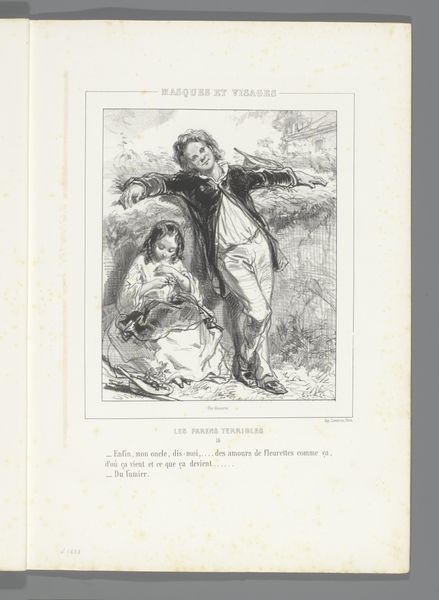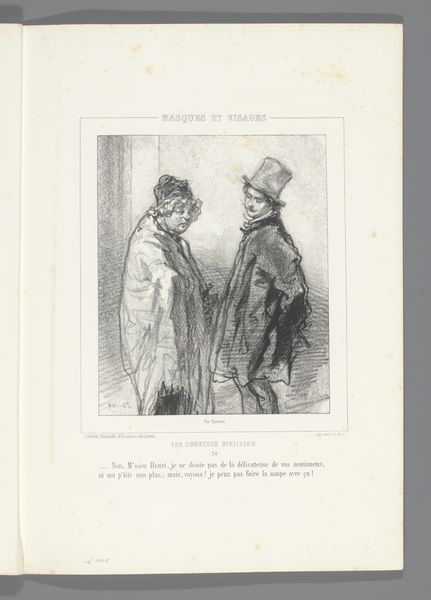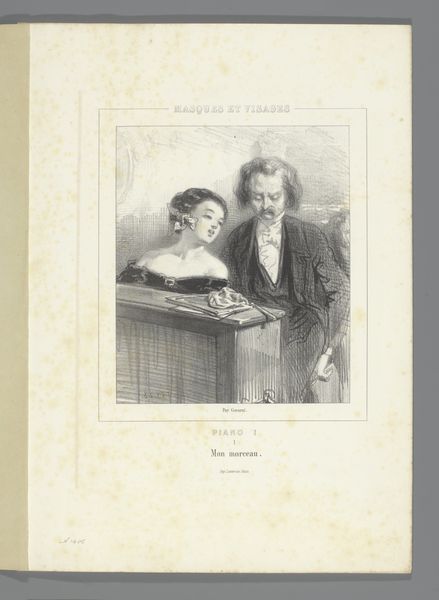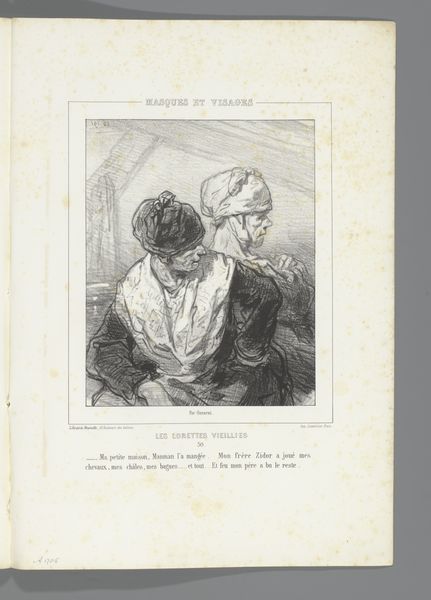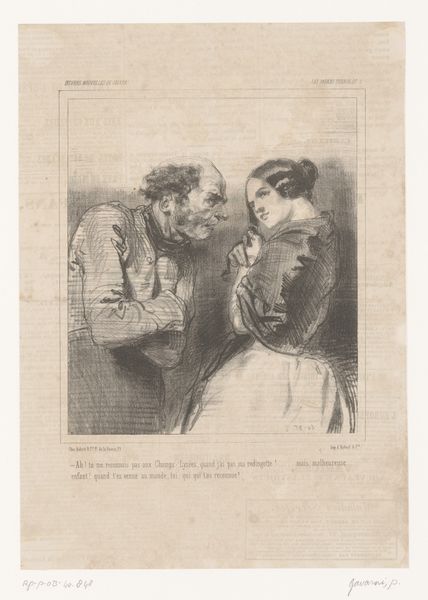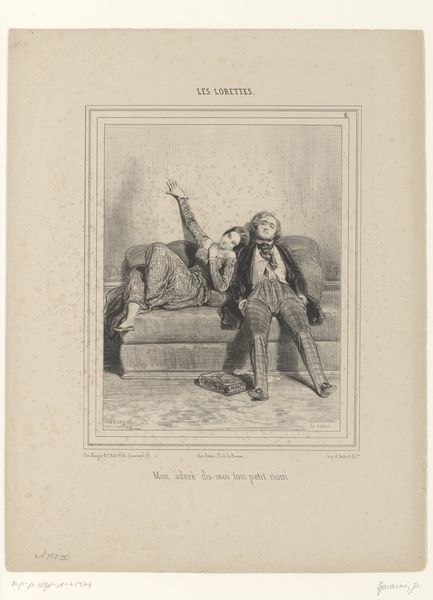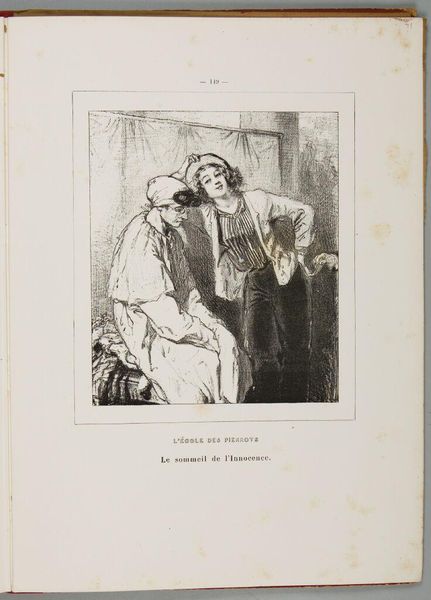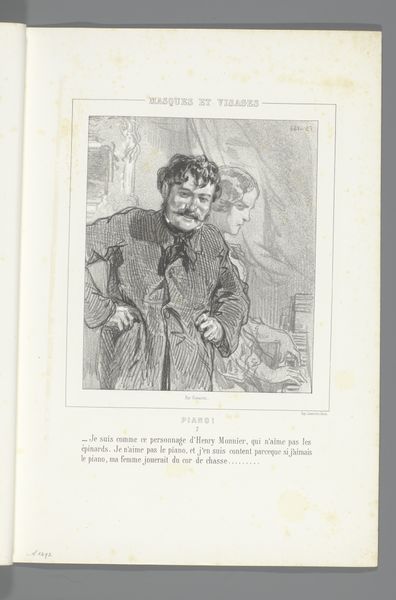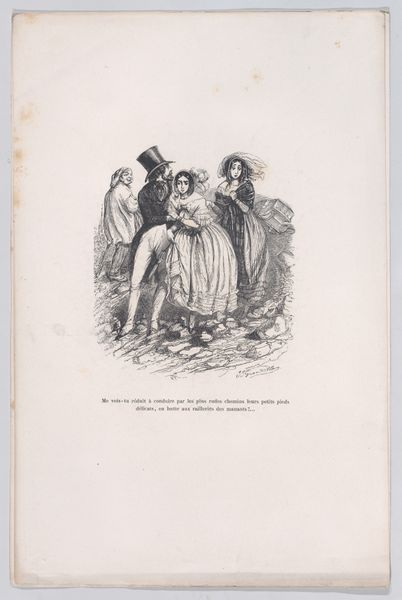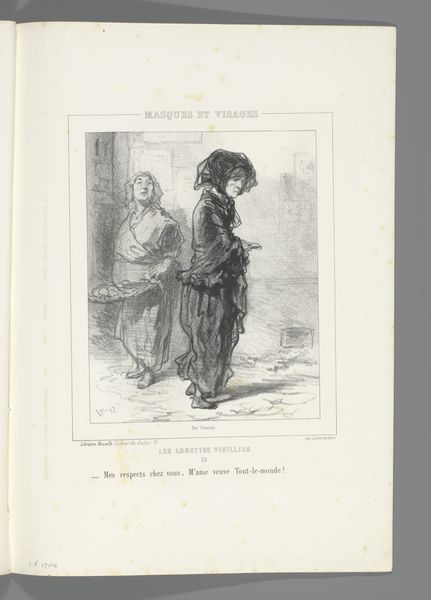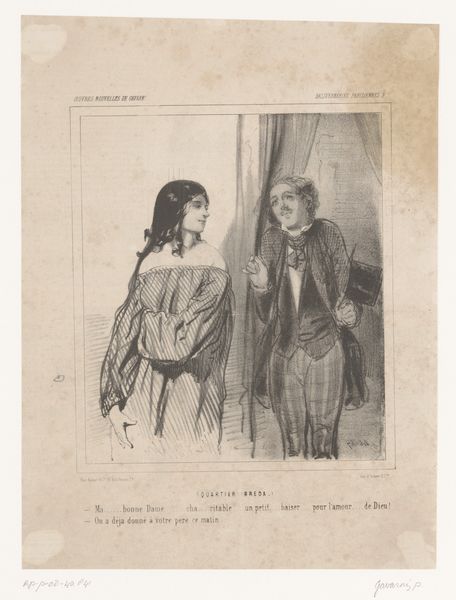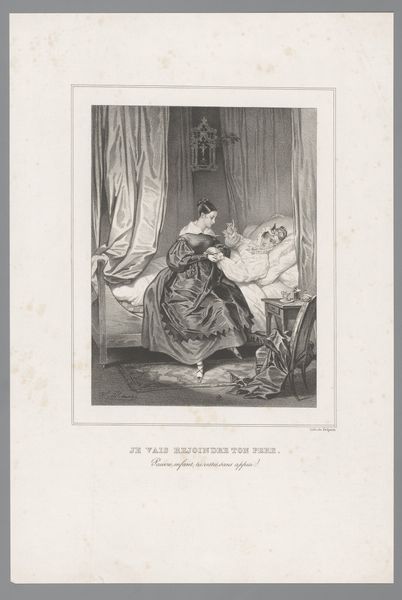
Dimensions: height 379 mm, width 277 mm
Copyright: Rijks Museum: Open Domain
Editor: This is "Vader verlaat met zijn dochter het bal," or "Father leaving the ball with his daughter," created by Paul Gavarni in 1853. It's a lithograph, so ink on paper, and it has a somewhat somber mood. What formal qualities stand out to you in this print? Curator: Consider the deployment of line. Gavarni utilizes hatching and cross-hatching to generate tonal variety, deepening the shadows, especially within the father’s jacket, while the daughter's form relies more on contour. This, juxtaposed with the blander depiction of the background figures, serves to immediately draw our attention to their pair. Do you perceive this interplay creating depth and dimension? Editor: Yes, I see that. The varying density of the lines creates the illusion of depth, and I hadn't noticed how much lighter the figures behind are. Curator: Precisely. Furthermore, the composition’s asymmetry introduces a visual tension. The figures are positioned off-center, leaning slightly to the left. The gaze of the daughter follows this vector while the stern mustache of the father counters the direction, thereby instilling a kind of anxiety, would you agree? Editor: I hadn’t really thought of it that way, but that makes sense. The father's form does feel heavy, both visually and emotionally, balancing out the empty space on the right side of the image. Curator: Indeed. Gavarni has masterfully manipulated formal elements such as line, tone, and composition to not only depict the figures, but to invoke an emotional landscape reflecting social dynamics. Consider how these intrinsic artistic choices shape the artwork’s overall impact and meaning. Editor: That's fascinating! I never really considered asymmetry in that way. I will definitely pay closer attention to composition now.
Comments
No comments
Be the first to comment and join the conversation on the ultimate creative platform.
